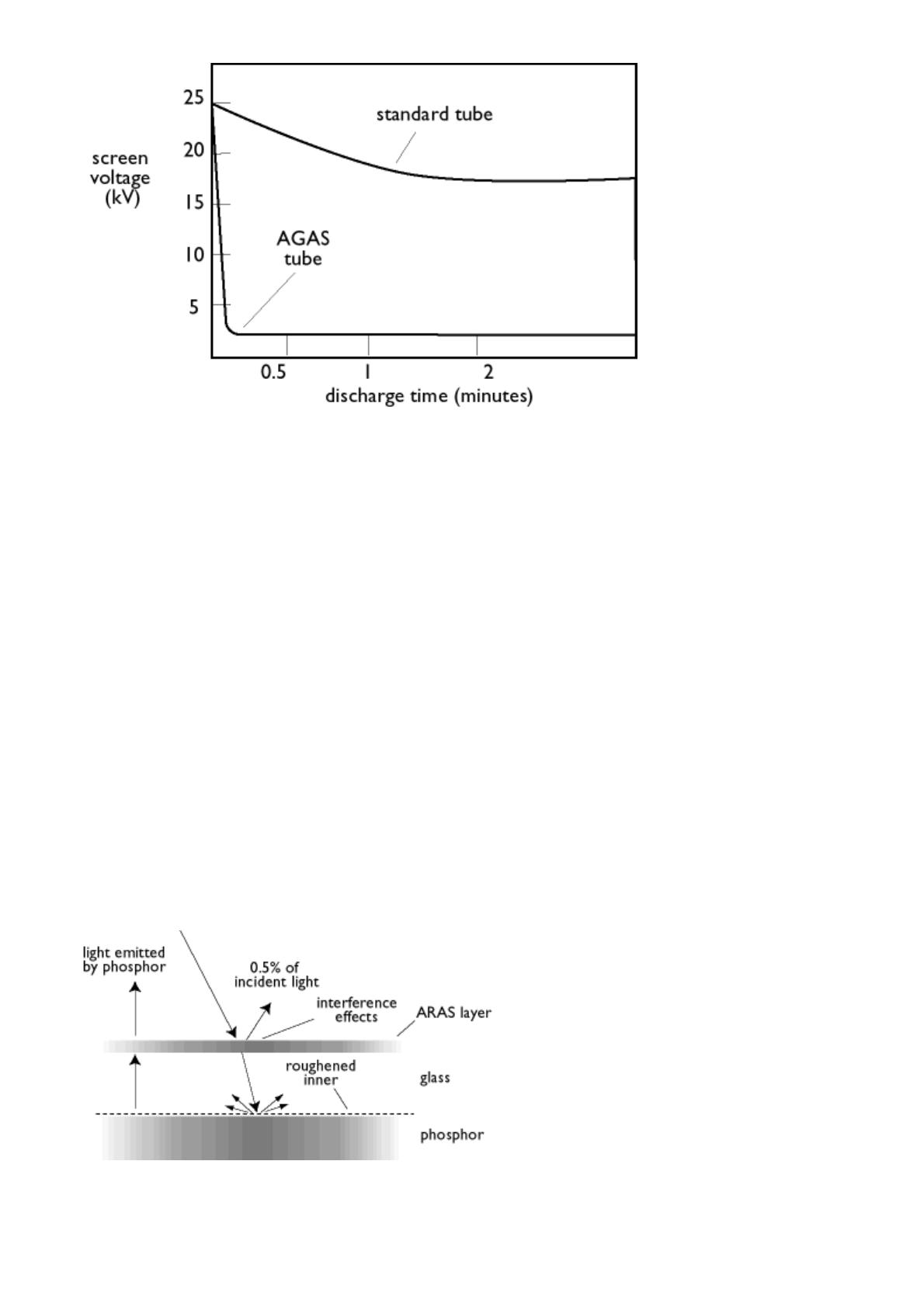
Anti-Static coatings
Due to bombardment by beam electrons, monitor screens become electrically charged when in
use. Electrically charged screens surfaces can attract dust particles. An Anti-Static coating is a
conductive coating deposited on the screen (or on a glass panel immediately in front of the
screen) that conducts away the charge and prevents screen dust build-up.
AGAS (Anti-Glare, Anti-Static) coating
AGAS is a silica coating applied to the surface of the screen by a spinning and spraying process.
It operates by diffusing reflected light to blur images of light sources on the screen. To provide
anti-static properties, the coating is impregnated with small conductive particles.
ARAS (Anti-Reflection, Anti-Static) coating
ARAS is one of the most effective anti-reflection/anti-static screen treatments currently available.
It is composed of a multi-layer structure of transparent dielectric material that suppresses
specular reflections by broadband interference effects at the screen surface. Anti-static
properties are provided by a single conductive layer within the multi-layer structure.
With ARAS, the intensity of reflected light is reduced from around 4.5% of the incident light (the
reflectivity of uncoated screens) to less than 0.5%. ARAS also has a major advantage over other
screen treatments: It doesn't diffuse or scatter reflected light, so picture contrast and sharpness
remain completely unimpaired. It's also easy to clean and tough enough to withstand
commercially available cleaning agents.
The ARAS coating reflects only about 0.5% of the incident light.


















